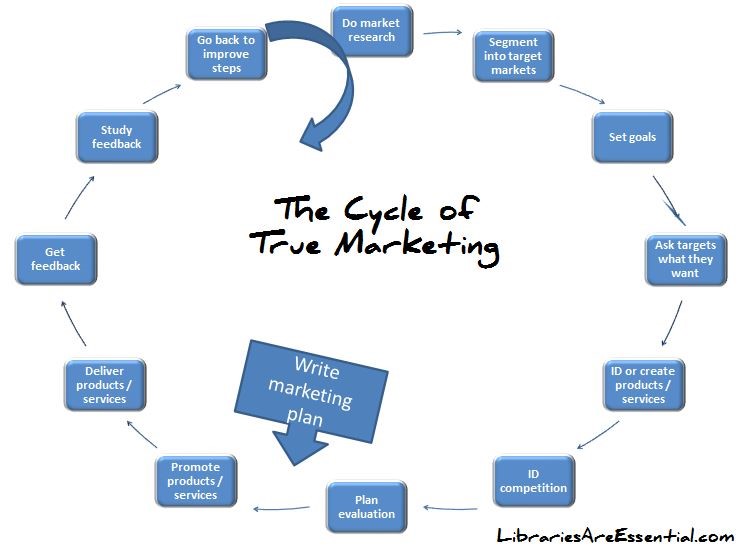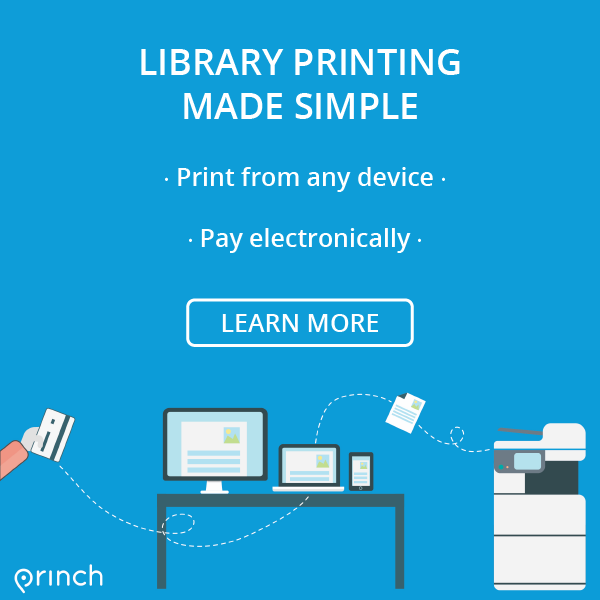In this post, we’ve put together a potpourri of library trends of 2017 based on interviews with library thought leaders and what we’ve learned from innovative libraries around the world.
If you are looking for new ideas going into 2018, these could give you a great starting point!
1. Community involvement
As the number of visits to the physical library has been slowly declining, librarians have expressed the need to actively engage the community in the library’s offerings. Jan Holmquist, a Danish librarian and library advocate, highlights in his interview with Princh the simple fact that the more we use technology, the more we need meaningful face-to-face interactions. He adds that we can find this at the library because the library is the community’s hub for learning and knowledge creation.
#Librarians have expressed the need to actively #engage the #community in the #library’s offerings. Share on XLiz McGettigan, the President at CILIP Scotland shared her vision with us and underlined the most important aspect when focusing on a community and that is connectedness.
You can build on the technological connectedness in your community, build on the people connectedness by creating relationships, real partnerships and mutual understanding. You can also build beautiful connecting spaces for people to learn, share and participate spaces to come together and work together. And the most important part, build on the trust your communities still have in libraries.

dlr Lexicon Family Day Event
2. Focus on all library groups
Another trend that we’ve noticed in the past year (but mostly during our time at the LAI Public Libraries Conference 2017 in Ireland) is the need to target the library’s services to different library groups, by creating different initiatives to personalize the library services for older people (Monaghan County Council Age Friendly county programme), for refugees (The German Libraries initiative to ensure the refugees inclusion in the society) or to people with disabilities (the Cork City Libraries personalized services for children with autism) and other library visitor groups.
We noticed that libraries are paying more and more attention to their users’ diverse needs.
3. Reinvent the library’s services
Physical libraries have been struggling with staying relevant for their communities as well as attracting more visitors. One main reason for that is because people love going to the library but they also have higher expectations from libraries.
People love going to the #library but they also have higher #expectations from #libraries. Share on XThis is why libraries have started using their spaces for new purposes, such as to enable innovation and knowledge exchange, to create cultural meetings, and most importantly to create community hubs by partnering with other local institutions. The latter is important because as Rolf Hapel, the DOKK1 Director of Citizens Services and Libraries emphasizes in our interview with him, both citizens’ services and libraries were born with a service obligation and it would be great for the citizens if more functionality was built in the libraries, by offering a mix of library services and public services.
Many libraries got even more creative and started to add a few more non-traditional items on the library’s borrowing list, such as tools, camping gear, garden and kitchen equipment, clothes and much more. This trend even has a name: the library of things!

The Library of Things American Libraries Association Initiative (americanlibrariesmagazine.org)
4. Know more about the library’s visitors and non-visitors
People’s needs are constantly changing and libraries need to have up-to-date information about the public’s opinion and attitudes regarding the library. One issue that Andy Priestner, a consultant in user experience for libraries, underlined during the LAI Public Libraries Conference 2017 in Ireland is that librarians are great at gathering data but they don’t do it as often as they should.
There are various user experience research methods that libraries could use to get insights into your most devoted visitors’ minds but most importantly into the minds of those who don’t use the library. Donna Fletcher, the library non-users researcher stresses that libraries have to adapt to these findings and make some changes. That’s the main point of the research, you must find what doesn’t work and change it.
Get insights into your most devoted visitors’ minds but most importantly into the minds of the non-users. #libraryresearch #userresearch Share on X5. Create an image for the library
When discussing the factors that lead to the library crisis in the past years, Liz McGettigan makes another great point about the poor advocacy that exists in libraries. Libraries have noticed the need to have a “big loud voice” in the community and to challenge the citizens’ wrong perceptions about libraries.
Just by focusing on creating an online image by approaching a service mindset, by using different social media tools and by meeting patrons in other places outside the library’s spaces, libraries are rapidly becoming an integral part of the community.

Marketing Strategy For Libraries: The Cycle Of True Marketing (librariesareessential.com)
6. Focus on emerging technologies
As Mick Fortune, the library IT specialist from the UK, details in our interview, the main role of the librarian hasn’t changed, the media and the delivery methods are all that have really changed. Some of these future advancements such as Artificial Intelligence, robots and self-service solutions or rich digital collections may seem distant in the future or even somewhat spine-chilling for some librarians, however, these are a hot topic right now and libraries worldwide are trying to figure out how they should be watching and studying these emerging technologies as tools for the future.
#libraries are trying to figure out how they should be studying these emerging #technologies as tools for the #future. Share on XLiz McGettigan says that this aspect is important because libraries must become learning and digital hubs and one-stop destinations to test drive and learn about the latest technology, equalizing access and skills around the new and fast developing technologies from coding, circuit making, self-publishing to augmented reality, 5d digital storage, I- beacon /NFC technologies, solar powering cells and artificial intelligence. You can read the rest of our interview with her here.
Hope you have enjoyed our own retrospective of 2017’s trends in the library world. We will be back next week with another interesting article.
Share your insights with us and our readers in 2018!
We are always interested in finding new library experts to share their voices with libraries worldwide. Contact us at info@princh.com and be a part of our Princh guest community!




Bad libraries build collections. This statement is blatantly untrue
Great article
I found this point exactly in Shanghi Conference2016
http://www.libnet.sh.cn/silf2016/english/
I hope the librarian will be successful to rich this point in all around the world
Maryam Pakdaman
librarian from Iran
very good idea ……..
“Community library for community development ” READ Nepal has doing great job from the community library, we have more then thousand life change success story.
The success as a library should be considered as a whole : services, collections, communities and staff.
It’s awesome to be a librarian.
Very useful article sir.
Thank you for sharing Knowledge
Very nice trends for library development
This passive aggressive hostility towards library collections is misplaced; the world’s greatest libraries hold great collections, usually have enormous endowments, and are elite first world institutions. Easy for them to disdain the value of content itself, because they have it by the bucket. Poor libraries, small libraries, public libraries all understand the value of collections, either because they can not fully meet the needs of their patrons, or because funding for building and enhancing collections has been slashed. Yes, to enhanced services and community building, but at least in the US, libraries have always been service- and community- oriented.
It is group activities so that we should build a good team.
Unsure how this relates to ‘library trends 2017’ frankly. You need to study your Horizon Reports: remember that the Internet, RFID, mobile phones, and SDD were emerging technologies once! I don’t know, and have never known, librarians who haven’t taken 1-6 into consideration, this are basics not new trends. HagerB and Daniel Winocour make great observations and I agree, your statement on collections needs “further reflection”
Every successful professional have to market their technology services with effective way. Hence, knowledge centre will be living in future.
[…] Paraschiv, P. (2017, November 30). ۶ Library Trends Of 2017 That We Noticed [Web log message]. Retrieved from pinch: https://princh.com/6-library-trends-of-2017-that-we-noticed/#.WnAat-eLnIU […]
The article was very good. I hope that librarians will use these tips in their work. Especially in my own country, Iran, where the lack of proper use of the Internet and technology is very high.
excellentI, think that libraries should also go toward marketing.
Hoping for the day the library business will reach its real position
[…] Changing Face of America’s Adolescents 6 Library Trends of 2017 That We Noticed | Princh Blog http://ffnresearch.blogspot.com/ The tales teens tell: what Wattpad did for girls Public […]
Nice site. I like it.